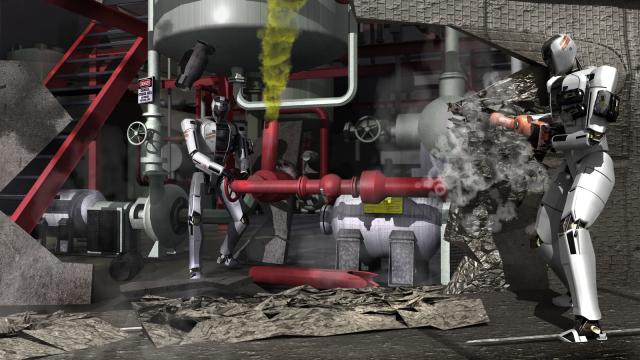As the Chernobyl and Daiichi Fukushima nuclear disasters illustrated in unnerving clarity, mankind commands technology capable wreaking destruction we can’t clean up without putting people’s lives at risk. That’s why DARPA is hosting the DARPA Robotics Challenge, in hopes of jump starting development of tomorrow’s mechanical first responders.
But in order to win the ultimate $US2 million purse, the six competing robots must first pass a gruelling obstacle course. The eight stages, or tasks, are designed by DARPA engineers to put the contestants in situations they’re likely to encounter in crisis zones the world over.

Task One
The robots’ first task will be their easiest. They’ve just got to slalom a 2WD Polaris Ranger XP900 side-by-side through a 76m long by 12m wide obstacle course strewn with pylons and barriers. The buggies will be limited to speeds of 16km/h and will be equipped with remote engine kill switches and brakes. Think of it as a very slow, very controlled Death Race. But, you know, with robots.

Task Two
Once they’ve parked the Polaris, the robots will then have to clamber through an ankle-breaking series of cinder-block walking hazards. The course consists of 10 subsections that become increasingly difficult as the bots progress.
Moving from right to left in the map above, the robots will first have to walk over 15-degree pitch ramps, step over diagonally laced 2×4 and 4×4 tripping hazards. Then they’ll need to hurdle 6-inch and 12-inch blocks, avoid 16-inch and 32-inch deep footfalls, mount the Diagonal Hill Stepfield and get down from its peak. After that, they’ll mount and dismount another stepfield pocked with pitched stairs before finally leaping over miscellaneous debris normally found in disaster areas.
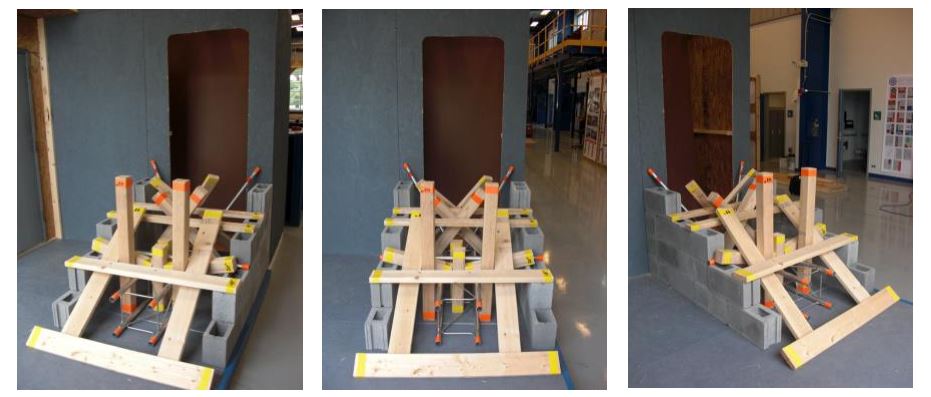
Task Three
The third task will evaluate the robots’ strength and dexterity. They must clear a path to a door by moving heavy debris piles that weigh between 2kg and 5kg. Hopefully crushed infrastructure from future catastrophes will be stacked as neatly as it is here.

Task Four
The door in Task Four leads to a hallway with three more doors. All the robots must do to advance is walk through them. Of course, they’ll have to open each one first. The first door pushes open, the second one pulls, and the third is equipped with a weighted closure (those hissing things that keep the door from slamming behind you). Seems easy enough.
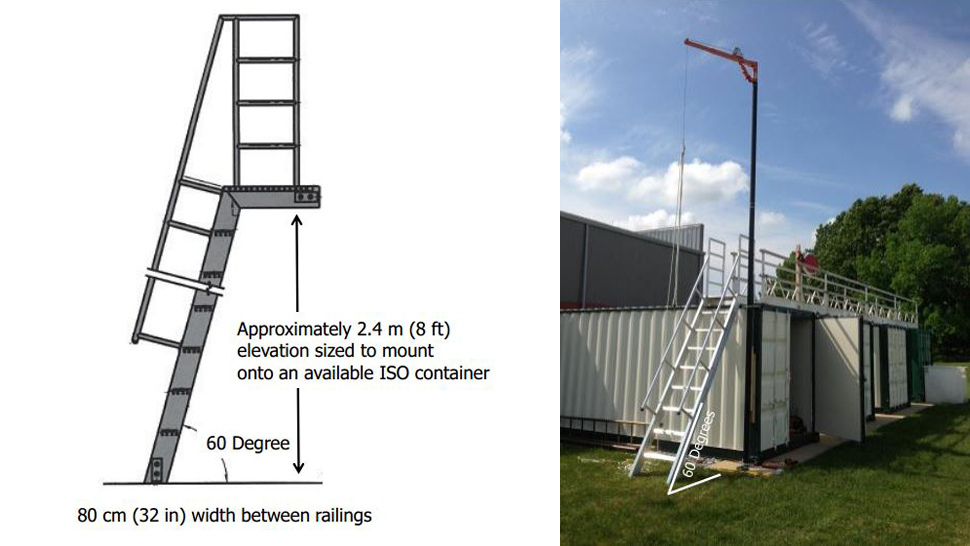
Task Five
The robots’ balance and agility will be tested in Take Five. Each contestant must ascend a 2.4m tall industrial ladder onto the roof of a shipping container.

Task Six
DARPA’s sixth task demands that each robot break through a section of wall. No, not with their mighty mechanical fists. They’ll be employing power tools, like civilised robots. The contestants will have their pick of a Dewalt 18V Cordless Cut-Out Tool, a Ryobi P340 18V Cordless Job Pil or a Skil 2895 18V Cordless Drill.
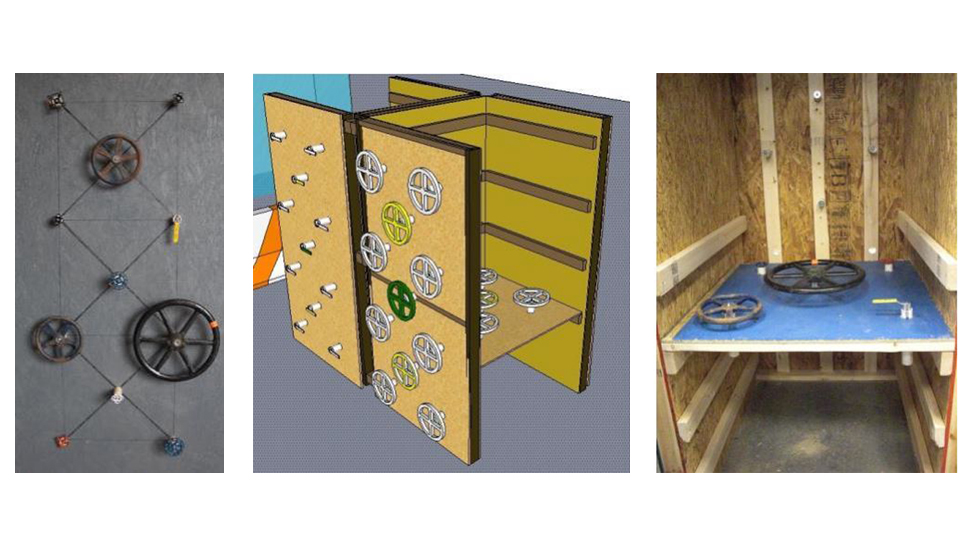
Task Seven
The penultimate stage demands an exceedingly high degree of dexterity. The contestants must identify and close a variety of valve wheels. The wheels will be located at various heights on a vertical wall, as well as on the horizontal surface behind it. The robots will have to find, grip and turn the variously-sized wheels closed without ripping them out of the wall.
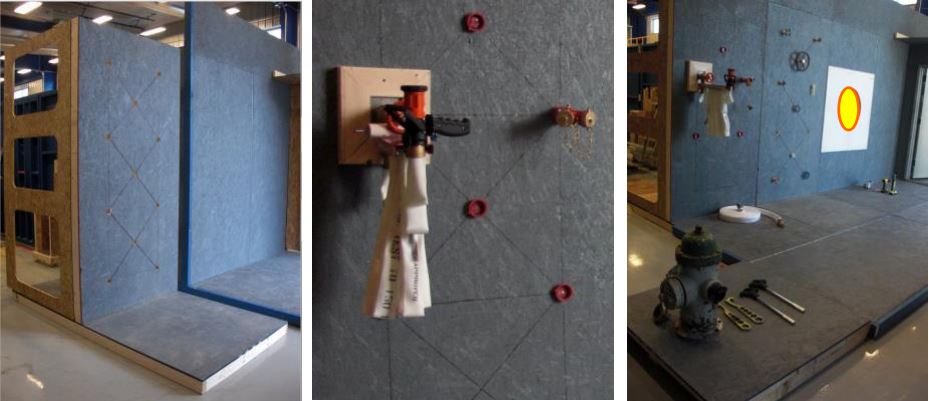
Task Eight
The final task demands a combination of speed, coordination and strength. The robots must uncoil a fire hose from a wall-mounted rack, drag the connector end down a pathway to a fire hydrant, and then connect it using the supplied spanners.
As impressive as this course is, especially given that the contestants will have to clear it while racing against the clock, this is among the first steps down a long road towards a truly deployable robot first responder.
After the Robotics Challenge is complete, the winning Track A teams (who build the robots) will collaborate with winning Track B and C teams (those who design the software controls) through 2014. Then, their ultimate “smart” robots will take on a final set of real-world challenges — we’re talking real leaking hydrants and water mains, not just valve wheels on a plywood wall — to take home the $US2 million purse. [DARPA 1, 2 – DRC – Core 77]
